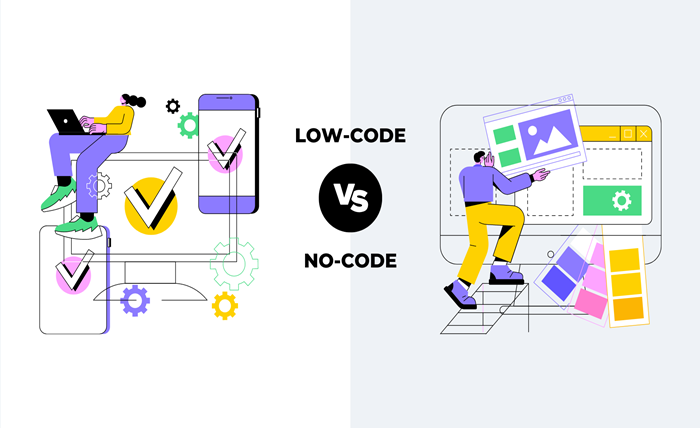In the rapidly evolving world of software development, low-code and no-code platforms are transforming how applications are built and deployed. These platforms enable users to create software solutions with minimal or no coding, democratizing the development process and accelerating innovation. This article explores the differences between low-code and no-code development, highlighting their benefits, use cases, and how they empower both professional developers and non-technical users.
Understanding Low-Code and No-Code Development
Low-Code Development: Low-code platforms provide a visual development environment with pre-built components and drag-and-drop functionality. While some coding knowledge may be required for customization, low-code platforms significantly reduce the amount of manual coding needed, enabling faster development and deployment.
No-Code Development: No-code platforms allow users to build applications entirely through visual interfaces without writing any code. These platforms are designed for non-technical users, often referred to as “citizen developers,” who can create functional applications using pre-configured templates and workflows.
Key Differences Between Low-Code and No-Code
1. Target Users
- Low-Code: Primarily aimed at professional developers and IT teams who need to accelerate development while retaining the ability to customize and extend applications with code.
- No-Code: Designed for business users and non-technical individuals who want to create applications without any coding knowledge.
2. Customization and Flexibility
- Low-Code: Offers greater flexibility and customization options, allowing developers to add custom code for specific functionalities and integrations.
- No-Code: Limited customization capabilities, as users rely on pre-built templates and components. Ideal for straightforward applications with standard requirements.
3. Complexity of Applications
- Low-Code: Suitable for building complex and enterprise-grade applications that require integration with existing systems and custom business logic.
- No-Code: Best for simple applications, prototypes, and internal tools that do not require extensive customization or integration.
Benefits of Low-Code and No-Code Development
Low-Code Benefits:
- Accelerated Development: Speeds up the development process by reducing manual coding and automating repetitive tasks.
- Enhanced Collaboration: Facilitates collaboration between developers and business stakeholders, ensuring alignment with business goals.
- Scalability: Supports the development of scalable and robust applications that can grow with business needs.
No-Code Advantages:
- Empowerment of Non-Technical Users: Enables business users to create applications without relying on IT, fostering innovation and agility.
- Cost-Effective: Reduces development costs by minimizing the need for specialized coding skills and resources.
- Rapid Prototyping: Allows for quick prototyping and iteration, enabling users to test ideas and gather feedback efficiently.
Also Read: Best Productivity Apps for Remote Work
Also Read: Quantum Computing Use Cases in 2025
Use Cases for Low-Code and No-Code Development
- Low-Code Use Cases: Enterprise applications, customer relationship management (CRM) systems, workflow automation, and complex integrations.
- No-Code Use Cases: Simple web and mobile apps, internal tools, data collection forms, and process automation.
Conclusion: Key Takeaways
Low-code and no-code development platforms are revolutionizing the software development landscape by enabling faster, more efficient application creation. While low-code platforms offer flexibility and customization for professional developers, no-code platforms empower non-technical users to innovate and solve business challenges.
Choosing between low-code and no-code depends on the complexity of the application, the level of customization required, and the target users. By leveraging these platforms, organizations can accelerate digital transformation, enhance collaboration, and drive innovation across teams. Explore the potential of low-code and no-code development to unlock new opportunities and streamline your software development processes.
















